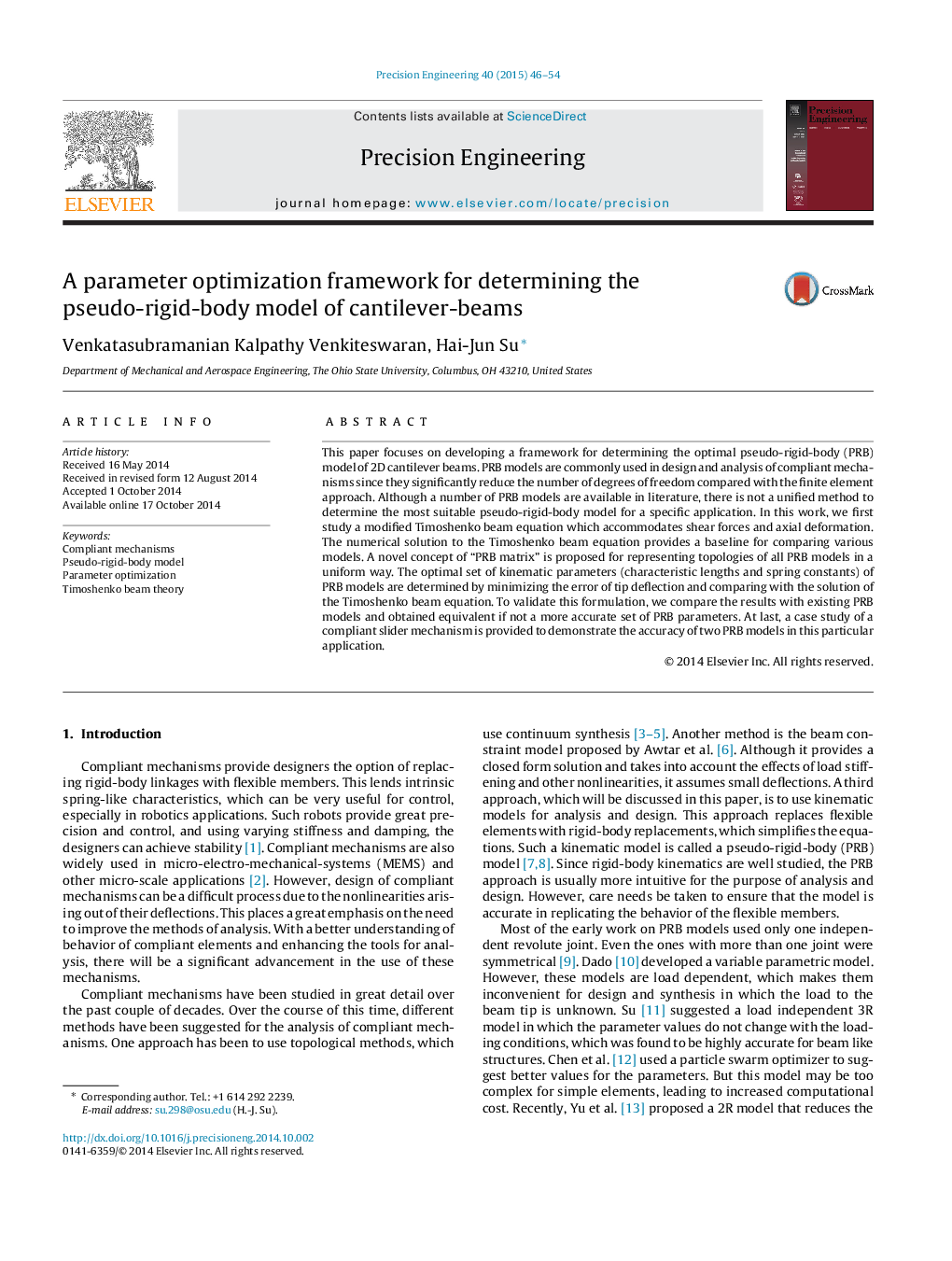| کد مقاله | کد نشریه | سال انتشار | مقاله انگلیسی | نسخه تمام متن |
|---|---|---|---|---|
| 801303 | 1467848 | 2015 | 9 صفحه PDF | دانلود رایگان |
• Timoshenko theory-based beam model developed for analysis of compliant beams.
• General pseudo-rigid-body (PRB) model defined with PRB matrix.
• Various possible PRB models listed and compared.
• Algorithm for finding best PRB model provided.
• Validation using compliant slider mechanism example.
This paper focuses on developing a framework for determining the optimal pseudo-rigid-body (PRB) model of 2D cantilever beams. PRB models are commonly used in design and analysis of compliant mechanisms since they significantly reduce the number of degrees of freedom compared with the finite element approach. Although a number of PRB models are available in literature, there is not a unified method to determine the most suitable pseudo-rigid-body model for a specific application. In this work, we first study a modified Timoshenko beam equation which accommodates shear forces and axial deformation. The numerical solution to the Timoshenko beam equation provides a baseline for comparing various models. A novel concept of “PRB matrix” is proposed for representing topologies of all PRB models in a uniform way. The optimal set of kinematic parameters (characteristic lengths and spring constants) of PRB models are determined by minimizing the error of tip deflection and comparing with the solution of the Timoshenko beam equation. To validate this formulation, we compare the results with existing PRB models and obtained equivalent if not a more accurate set of PRB parameters. At last, a case study of a compliant slider mechanism is provided to demonstrate the accuracy of two PRB models in this particular application.
Journal: Precision Engineering - Volume 40, April 2015, Pages 46–54
